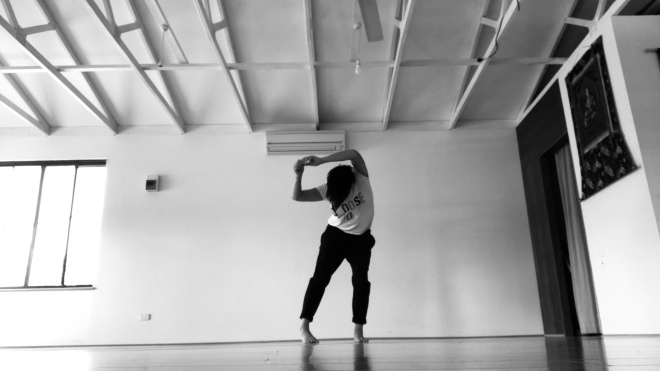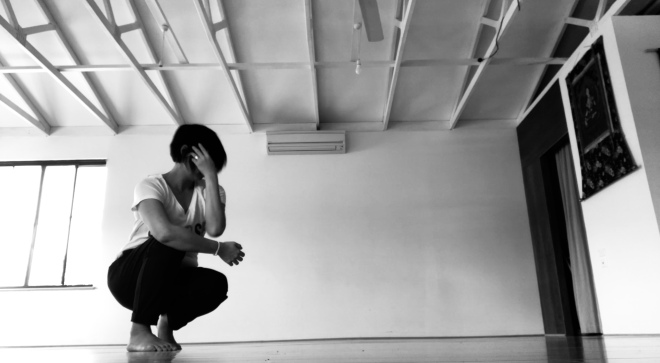Recently I’ve been trying to fold in some more scientific language when talking about what I do and this ‘thing’ called creative practice. Science has a way of sitting comfortably, and wholeheartedly, in the space of the unknown. To scientists the unknown is where discovery happens. It is the unknown that guides the purpose for the research that is to be conducted. As creative practitioners we all know this intrinsically, we know that making art is about discovery and exploration. It is the uncovering the answers that is the wonder of the process. (You mean when the unknown becomes known?)
…but somehow as artists we have also become to fear the unknown. (Am I using the royal ‘we’ inappropriately here? Am I generalising?!) We find it challenging to say ‘Actually I don’t know’. As if we will be perceived as (or perceive ourselves to be) ‘failing’. My youngest boys teacher says ‘if you are not making mistakes you are not learning’ – and I like to apply this philosophy of learning to my creative inquisitions.
Another (current) favourite mantra inspired by the sciences is: ‘Have a hypothesis, not an absolute’… but that’s a bit off track so I’ll go back to my original thread.
Recently I took another block of sessions at QUT, this time with the first year Bachelor Fine Arts (Dance) students. These sessions are a really great experiences. It forces me to be clear and succinct about how I approach my practice, describe what my practice is and how I sustain the curiosity and inquisition over time. I don’t usual have much time with them and this particular unit was a total of 9 hours – if they came to every session! There is a varied level of experience in practice/improvisation/contemporary dance and their knowledge of the diversity of dance related jobs/interests/approaches to making work/collaboration can be only just forming.
What I was able to do was to demonstrate the philosophies that have developed over time in relation to my community practice, by introducing them to the students via their own lived experience of my sessions. It becomes less about teaching content – but about teaching an approach.
Look, if I’m to be really honest – these are philosophies to live life by – but that might be taking things a little too far!
Be present.
Don’t think about making the next movement or series of movements and don’t undertake choreography – that is ‘dance making’. Don’t get trapped (although it is also fine if you do) by making meaning – or giving meaning – or developing narrative (even thought this will happen as we are only human!).Be in the moment that is currently unfolding – without predicting where it will lead or end up.
 No judgement.
No judgement.
The movement practice/improvisation must be undertaken with a ‘no judgment policy’. We do not practice to make a judgement on ourselves about how we move or what we are feeling (if anything at all). We are not here to judge if something is ‘interesting’ or not – for ourselves or for each other. We witness each other in movement to support – not to judge.
We are all responsible for holding the space for risk taking, learning and reflection. Experimenting requires courage. Courage can exist when there is no judgement.

Take time to questions/debunk/reflect on inherited constructs.
People often say to me ‘but I’m not a dancer’ or ‘I haven’t done any dance classes for years’. The most common comment is ‘I can’t even touch my toes’!’ So my first objective is to unpack the ‘inherited construct’. What is it that you think you will be asked to do? What do you believe ‘dance’ should look like? Why should it be like that?
This was the same at QUT. What are the movements a dancer at QUT should be doing? What movement does that ‘inherited contruct’ of a dancer look like/feel like? If we note it and accept it as the truth – then fine. However, what if we note it and test it? What if we identify it as an ‘inherited construct’ that we might want to challenge? What happens next? (Fingers crossed – it is discovery – but lets not pre-empt here)
What I really enjoy doing is facilitating insights and experiences that help to develop an individual’s own construct of what it is to be ‘in dance’. For YOU and YOUR MOVING BODY. To conversation with your body in a movement practice. To learn more about yourself while moving.
This can be an important tool in community projects, where you might be able to test the notion of ‘inherited constructs’ in day-to-day life, and even in contemporary society.
Another philosophy I often offer in this scenario is: “Everything you bring/have/experience is absolutely enough”. That is – no need to be able to touch your toes to experience dance and movement!! Movement is for everyone.
 The power of the somatic experience.
The power of the somatic experience.
I use the term ‘somatic experience’ in relation to asking the mover to be more focused on HOW the movement feels rather than how it looks. In western teaching and training methodologies this can sometimes be over looked, or not the time and space to organically develop. The type of dance training that happens today is often in the physical.
Anatomical alignment. Placement. Face this way, or that way. Stand in rows. Leg kicks in ‘that’ direction, at a particular height. Undertake exams that give you a graded result based on an assessment of your performance and technique.
These are important training models. Don’t get me wrong. These are some of the models that I trained through and they are building blocks to dance training. Knowledge and understanding of safe dance practice is vital. But so are perceiving body sensations. What is the energy that informs a movement? How does it feel? What of the imagination exists for you in a movement?
What happens when you observe someone moving and ‘try on’ what you think they are feeling in that moment? What happens when this occurs and you find your own version of someone else’s dance?

Transmission.
In improvisation we are attuning to, waiting for or even conjuring ….a flow. What the flow feels like, how it arises and how it unfolds is different and varied. There is no one model, recipe or score. However the approach is to be equal parts receptive to opportunities (which requires noticing) and equal parts transmitting (or offering). (Pretty much sums up a community projects actually!)
Sometimes your offerings are stronger and that leads to a response from those around you – sometimes we occupy a more receptive space. The flow happens when there is balance of these parts and the edges between are blurred.
Magic happens when all those that are present negotiate equally – in balance and in sync. Try this notion out as you go about tomorrow, today, the next day.
Equilibrium. Balanced Transmission. Equal parts receiving and offering. Flow.



